By: Owen Chamberlin
GOOOOOOOOOOOOOOD MOOOORNIIIIIIIIIING VIETNAM!!! It’s time to rock it from the Delta to the DMZ! This is your host, Owen Chamberlin, with Global Semester Radio Saigon, coming to you live from Vung Tau Beach with this week’s update!
In all seriousness, my name is Owen (if you’d already forgotten, maybe write it down this time…), and I am a junior at Olaf triple majoring in political science, economics and French. I want to deviate a little bit from the typical recap of our latest activities, although we will get to that in a bit (sneak peek–it’s a lot of sitting). I’m going to take the opportunity to reflect a bit on the places we’ve been so far, now that we have reached our third and final destination. I will admit, it is a bit of a digression, so if you just want to hear about what your Globie has been up to recently, feel free to skip ahead a bit. Ok, let me begin:
I have always loved big cities. On the surface, they are all very similar– always loud, often smelly, and frequently overwhelming. However, in my mind, every city has its own unique character, and part of the fun of exploring a new city is uncovering that which makes it unique. So far this semester, we have spent a lot of time in urban areas–San José in Costa Rica, Johannesburg and Windhoek in Southern Africa, and now a tantalizing one-day glimpse of Ho Chi Minh city, the biggest yet. I have had the time of my life exploring and learning these cities, and I am going to unpack my observations here.
*
San José
San José, unlike any place I had ever been before, was an explosion of color. Even flying in, one could see the sea of red roofed houses spread across Costa Rica’s Central Valley, a striking contrast to the gray and brown scar that was our layover in Dallas. Once we landed and could see things from street level, the multitude of colors only grew–each house was unique both in construction and paint job, an inviting blend of soft yellows, bright reds, and deep blues, augmented by scores of colorful ads splashed across the sides of what seemed to be every available surface. Costa Rica’s stunning natural beauty was never far from mind either, as one could almost always see the lush green mountains surrounding the city peeking out above the buildings.
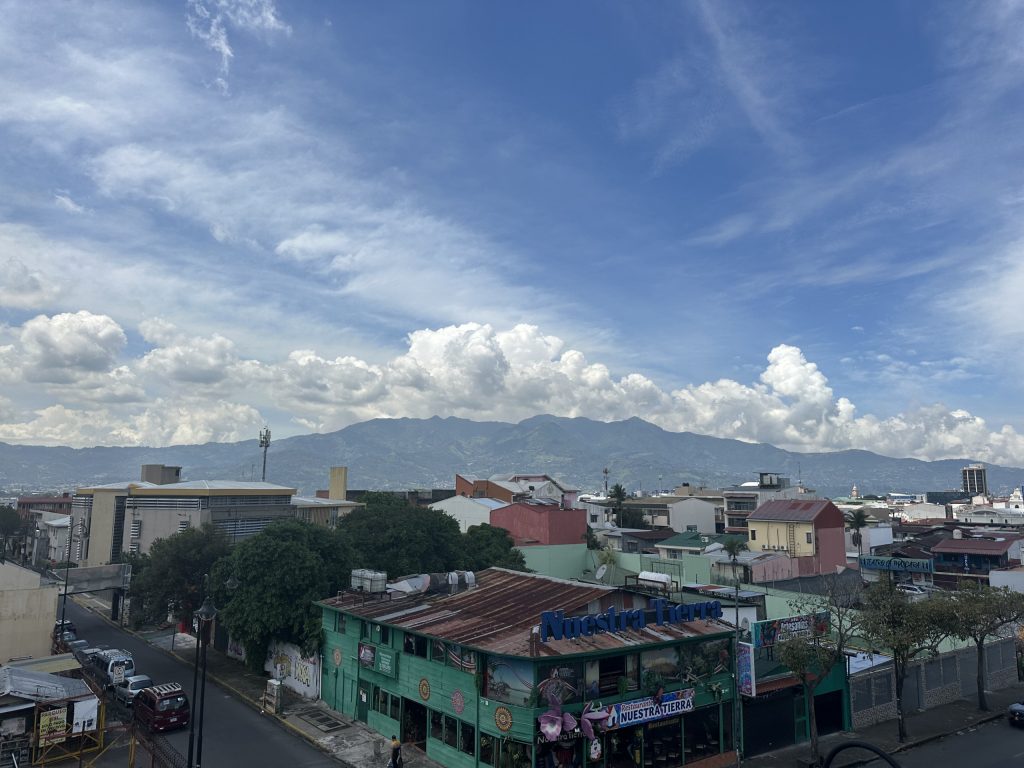
**
Johannesburg
Johannesburg is a city of lines, both real and imagined, but each equally angular, harsh and divisive. In the neighborhood we stayed in, Melville, the divisions were tangible–every house was protected by a high wall, often topped with spikes and barbed wire. One didn’t need to see the people–the white residents or the black people I encountered on the streets each morning combing through the garbage and recycling bins to look for salable or reusable items, yet who rarely failed to return my smile or greeting–to recognize the inequalities, the distrust, and the fear that makes the people of Melville feel they need such walls. The invisible lines were just as easy to notice. I remember a street where, on one side stood block upon block of upper-middle class homes with neatly maintained yards, and on the other, row upon row of dilapidated tin shacks baking in the African sun. When we visited the Soweto townships, someone asked our guide, Molefi, why we were not looked on with hatred, given that the majority of our group is white, and the population of Joburg’s townships has long been oppressed by white South Africans. He just smiled and said, “they know you are not directly part of the regime that oppressed them. White South Africans don’t ever come to Soweto”. That is not a direct quote, but the message was the same. The legacies of apartheid have left Johannesburg a grid of divisions.

***
Windhoek
While the echoes of apartheid reverberated around Joburg, so the remnants of colonialism haunt the city of Windhoek in Namibia. Mere blocks away from the Parliament of Namibia, the Alte Feste, the German colonial headquarters, still looms over the downtown, housing an imposing statue of a mounted soldier that, until recently, pointed directly toward Berlin. Many of Windhoek’s streets, buildings, and neighborhoods still hold their German names. One of the wealthiest white suburbs, isolated from the rest of the city by a series of large hills, is known as Kleinwindhoek, German for “Little Windhoek”.
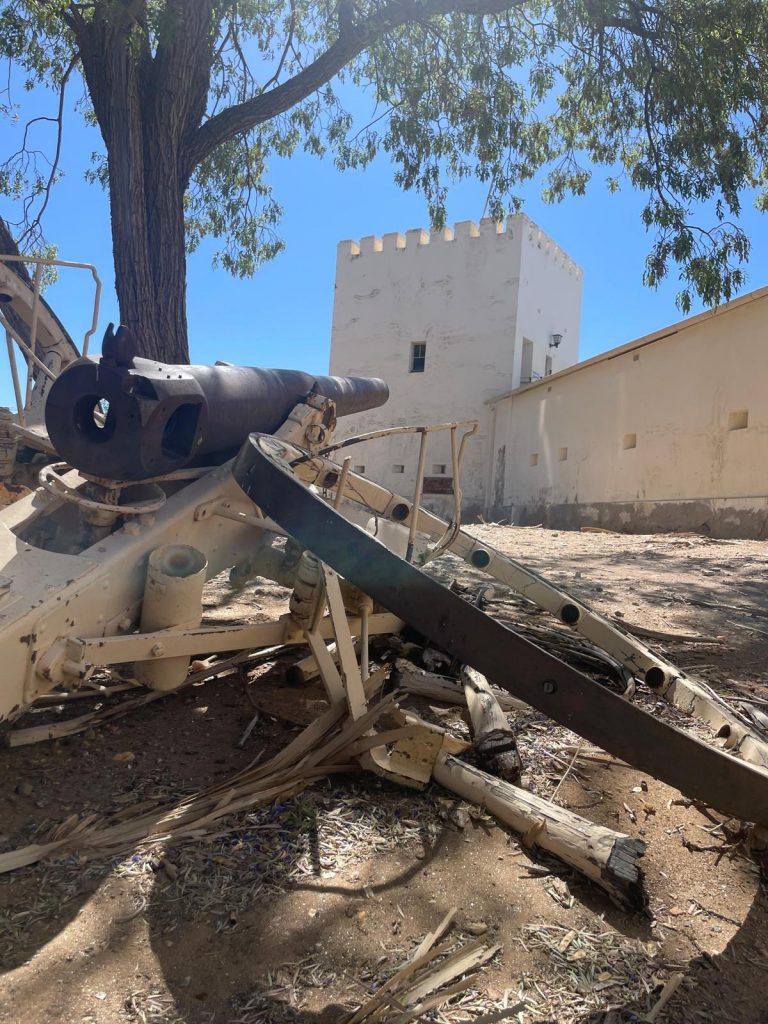
In fact, many of the upper class, desirable areas to live in the city have German names, while neighborhoods that are more economically depressed are given names in indigenous languages–like the informal settlement of Katutura, which literally means “place where no one wants to live” in Herero. The place names of Windhoek signal the racial divides that colonialism forced upon the Namibian people.
****
Ho Chi Minh City
Now, to preface this next observation, I will admit that we have been in Vietnam for a mere 48 hours. Yet I can already tell that Ho Chi Minh City, at least in terms of city-ness (call me an academic), puts all of our other destinations to shame. It is truly a sea of humanity. HCMC is home to 8 million people, with another 14 million in the metro area, and every one of those 22 million people owns a motor scooter and drives it through the streets with surprising audacity. In fact, for every one car on the streets of the city, there are 20 motorbikes. There truly are people everywhere, walking, sitting and eating street food barely a foot from the bikes zooming by, and performing in the streets. I’ve already seen three fire-eating performances. HCMC is a dazzling display of light, color, noise, smells both good (yay street food) and bad (yay pollution from 22 million motorbikes). I am beyond excited to spend the next few weeks living and learning in such a vibrant place.

If you’ve made it this far, congratulations, and thank you for bearing with me. I know this post has already stretched on quite a bit but I do want to take you all through our adventures over the last few days. Maria left off with our final full day in Namibia, so I’ll start the next morning. We left our hotel around 10:30 for one last drive through the semi-arid desert that surrounds Windhoek, to Hosea Kutako International Airport, which lies about 40 minutes outside the city. We said final goodbyes to Pinias, our beloved Namibian guide and professor, and boarded our first of three flights, a short hop on SA Airlink from Windhoek to Cape Town, South Africa. We survived a fair amount of turbulence on takeoff and what Lauren described as “either a pilot in training or someone who just came over from the air force”, and were even treated to sweeping views of Cape Town and Table Mountain, a unique flattop mesa that overlooks the city. Our layover in Cape Town was about three hours, and Grace got to briefly reunite with her boyfriend (who is a St. Olaf student from South Africa who was home for an interview) in the airport!
Our second flight was a nine and a half hour overnight haul from Cape Town to Dubai on Emirates airlines. As far as long flights go, it wasn’t too bad. Many of us struggled to sleep, but I drew a lucky straw and got to sit next to Alice, who has a Nintendo Switch, so I spent most of the flight playing Mario Kart. There were also in-flight games, and some Globies played a lot of Tetris. And by a lot I mean 6 HOURS… In Dubai, we had enough time to get some food and explore the luxury items in the duty free stores, but we were all so tired that once we had eaten, most people plopped down and tried to nap. I finally fell asleep–five minutes before we boarded our final flight…
It was super hazy as we took off from Dubai, but those on my side of the plane were able to catch a fleeting look at the Burj Khalifa, the world’s tallest building. Luckily for me, I was able to get a whole hour at the beginning of this final flight–six and a half hours from Dubai to HCMC. Not so luckily for me, I dreamed about being on a plane, so I guess I might as well have just stayed awake. After seemingly endless hours on a plane and the inevitable blurring of two days into one that comes with trans-global flight days, we landed in HCMC refreshed, energetic, and really clean! (For those of you less humorously inclined, that one is known as sarcasm. Check it out: https://www.merriam-webster.com/dictionary/sarcasm).
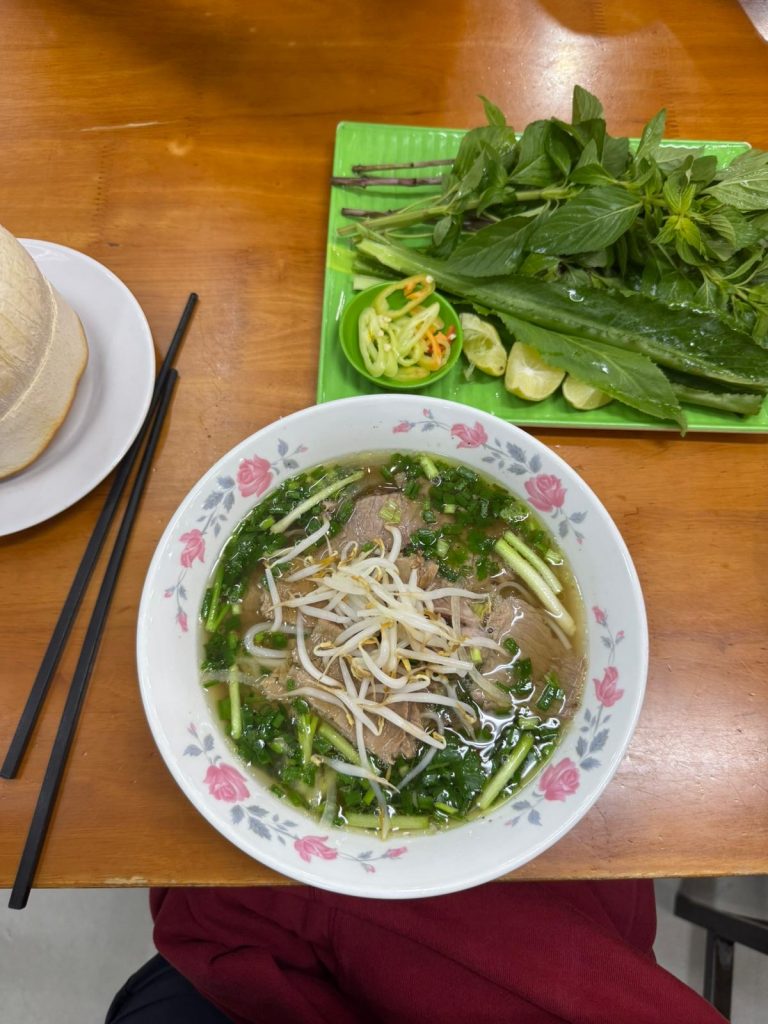
The saving grace to all of our exhaustion, though, was a pho restaurant that our TA for our time in Vietnam, Hằng, took us to. It was the perfect introduction to Vietnam and we were all so hungry that we wolfed it down. I think it got us all excited for a month of delicious Vietnamese food as well! Then it was time to check into the Aristo Hotel Saigon for some much needed sleep.

The next morning, Thursday, we had breakfast at the hotel, which honestly took many of us by surprise. They had eggs and bacon, which we were obviously accustomed to, but also a variety of things that, as Americans, we tend not to associate with breakfast–dumplings, beans, mashed potatoes, fried fish with passionfruit sauce, and, of course, pho. There was also fresh dragonfruit, which I’m guessing very few of us had ever had before. It was beautiful and also tasted really good. After breakfast, we went to our host institution, the School for International Training, a quick 3 minute walk from the hotel, for an orientation to Vietnam and our program. We also met our professor for the next month, Dr. Pham Ngoc, who is rapidly demonstrating that she might be the best-dressed person in Vietnam.
We spent the afternoon at Independence Palace, a former colonial office building during French rule that was later refurbished by the government of the Republic of Vietnam and used as the President’s office and residence until the end of the Vietnam War. It was a beautiful building, filled with ornate rugs and lacquer paintings of Vietnamese life. We also got to explore the bunkers underneath the palace, packed with maps and radio equipment, from which much of the war effort was conducted. All the signage was in three languages, Vietnamese, English, and French, which was great because I was able to brush up on my French skills a bit. It was also fascinating to hear the language used to describe the war. The North Vietnamese army was constantly referred to as the “liberation army”, and the events of the “liberation of Saigon” were described in detail in the short informational film we watched at the end of our tour. The same film also described the war as being fought over the “territorial integrity” of Vietnam. This language is just so different from the narrative painted in the United States, a narrative of good versus evil, capitalism versus communism, and democracy versus tyranny, and a good reminder to reflect on our perspectives as foreigners and as Americans.
We capped off our first full day in HCMC with a group dinner at Quan Ngon Restaurant, actually just across the street from Independence Palace, where we were hit with a blitzkrieg of unidentified but infallibly delicious plates of food–glass noodles with veggies and some sort of seafood, fried rice, rice cake “tacos” with veggies and chicken, spring rolls, egg rolls, some other roll that I had never seen before, the list goes on and on. It seemed like a never ending parade of dishes, but every bite was amazing and I never wanted it to end.
I am writing this from the bus on the way to Vung Tau Beach, where we will spend our Fall Break–three days with no class and no group activities planned. Swing dancing on the beach? Probably. Many games of our 500 tournament? Almost certainly. Finishing our final paper about Namibia? Weeeeeellll, we’ll see.
Anyways, I’ll leave all that for our next writer to tell you about. I’m headed to the beach 🙂
Signing off,
Owen
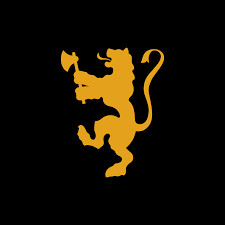
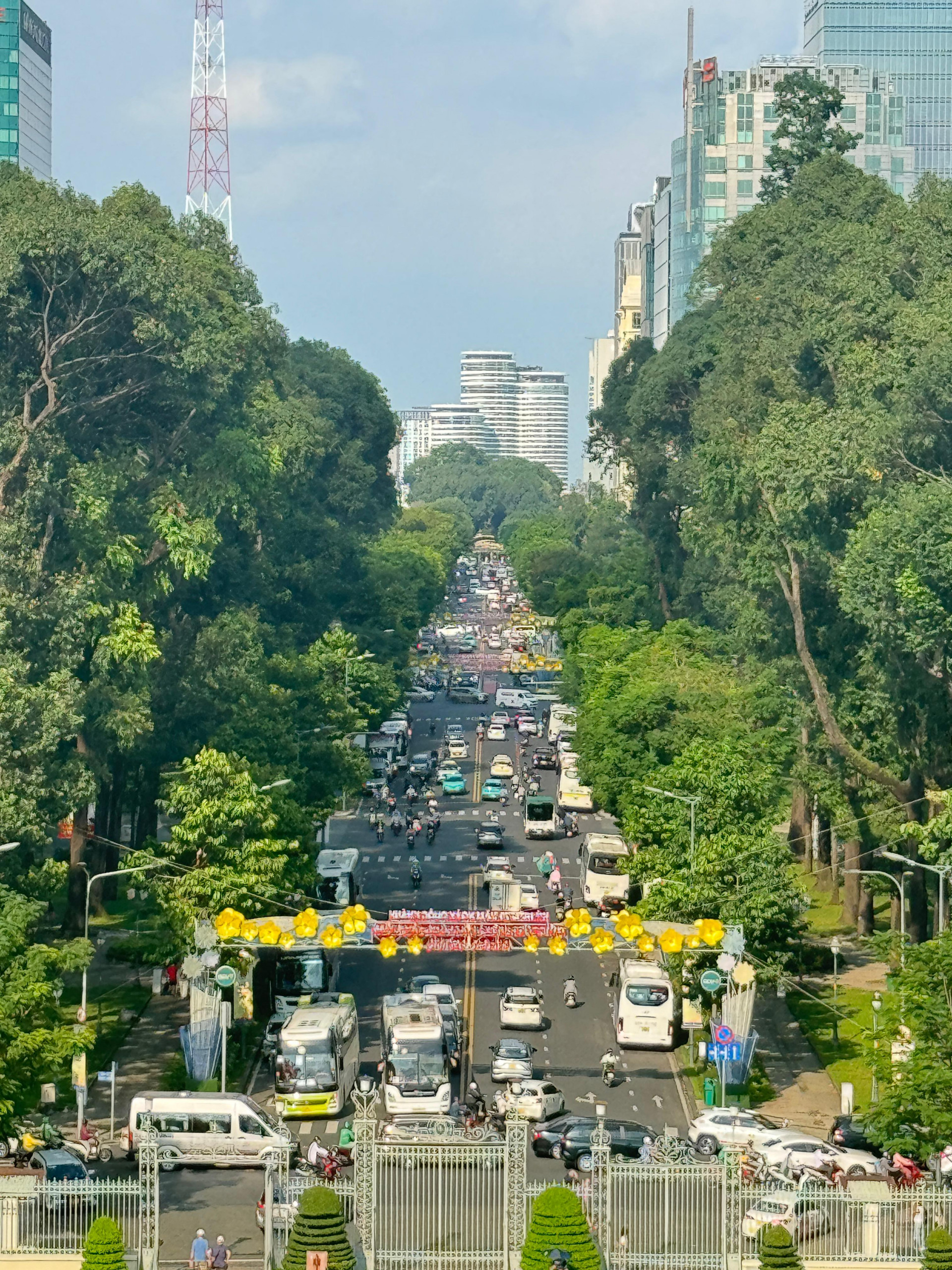
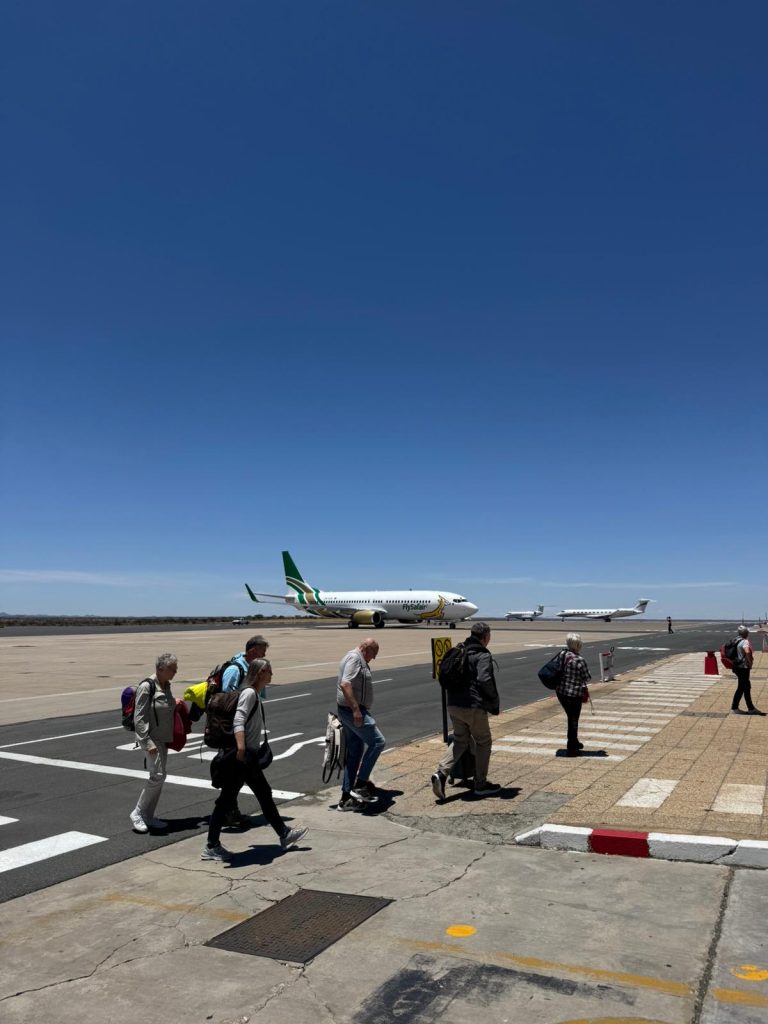
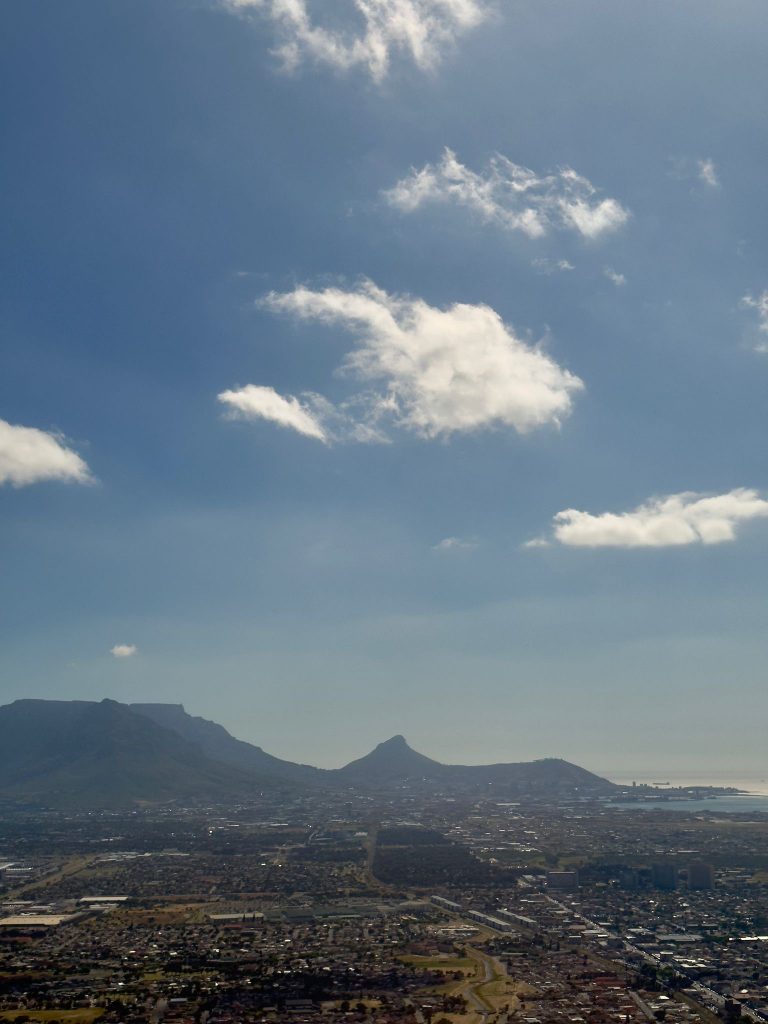
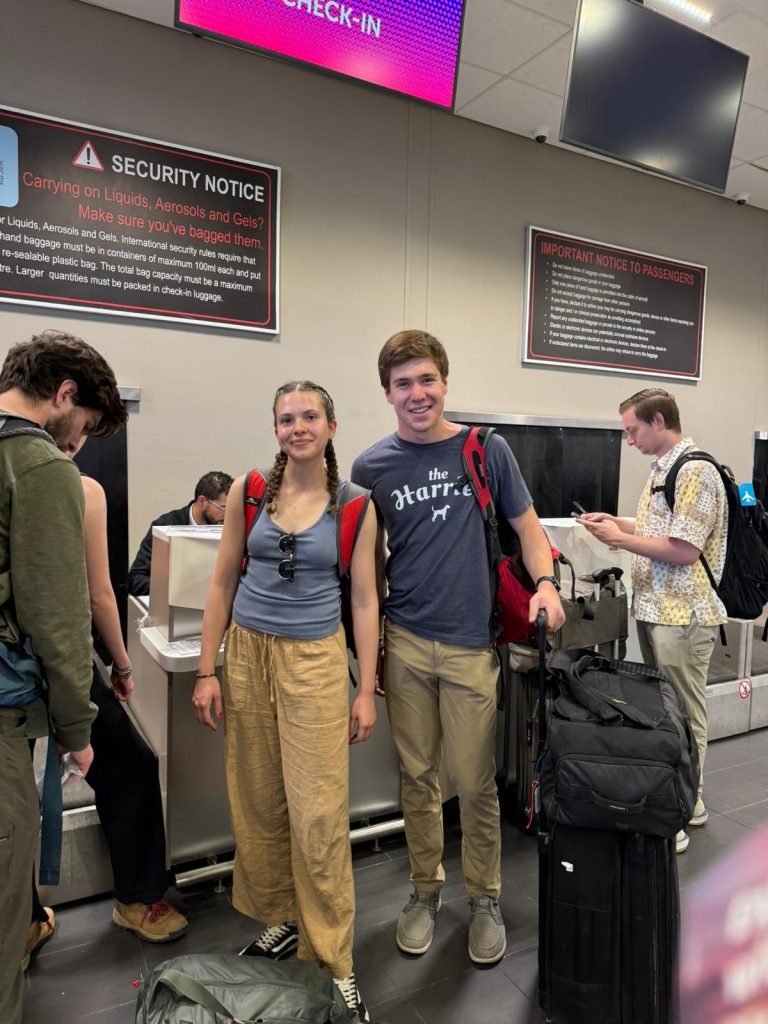
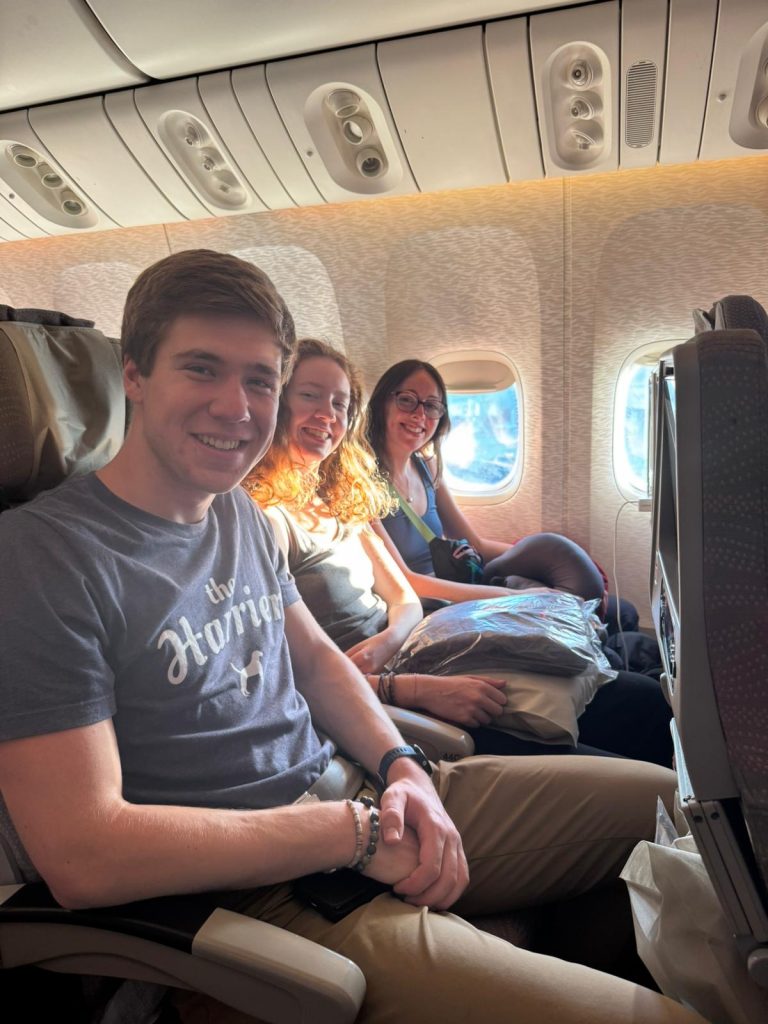
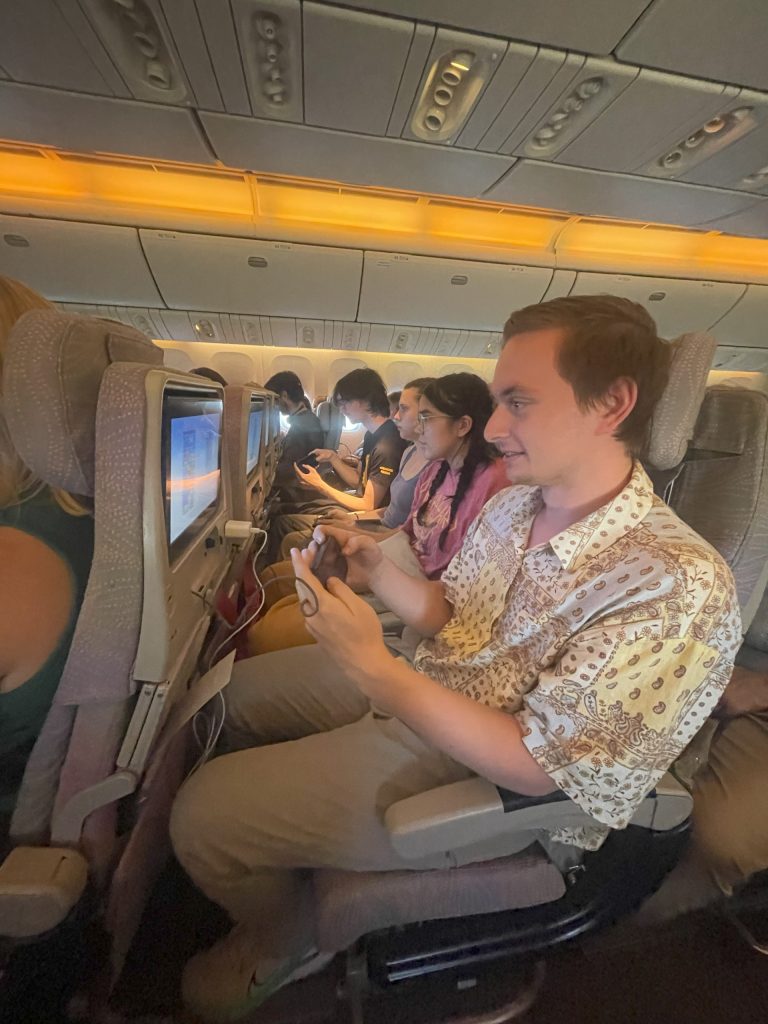
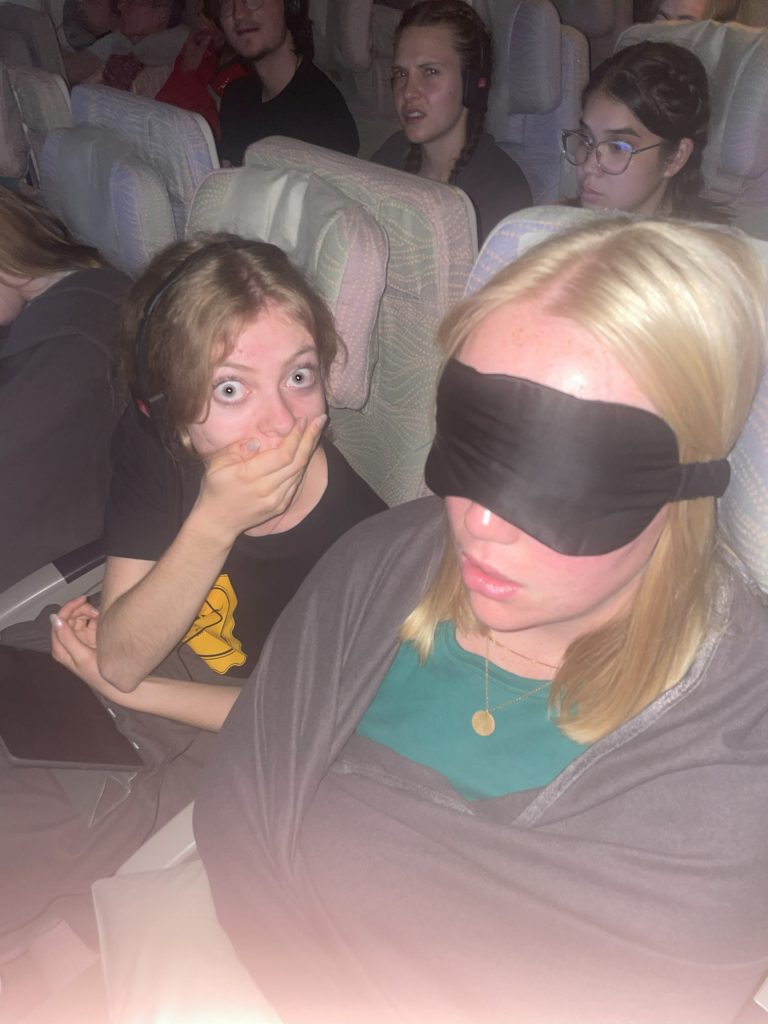
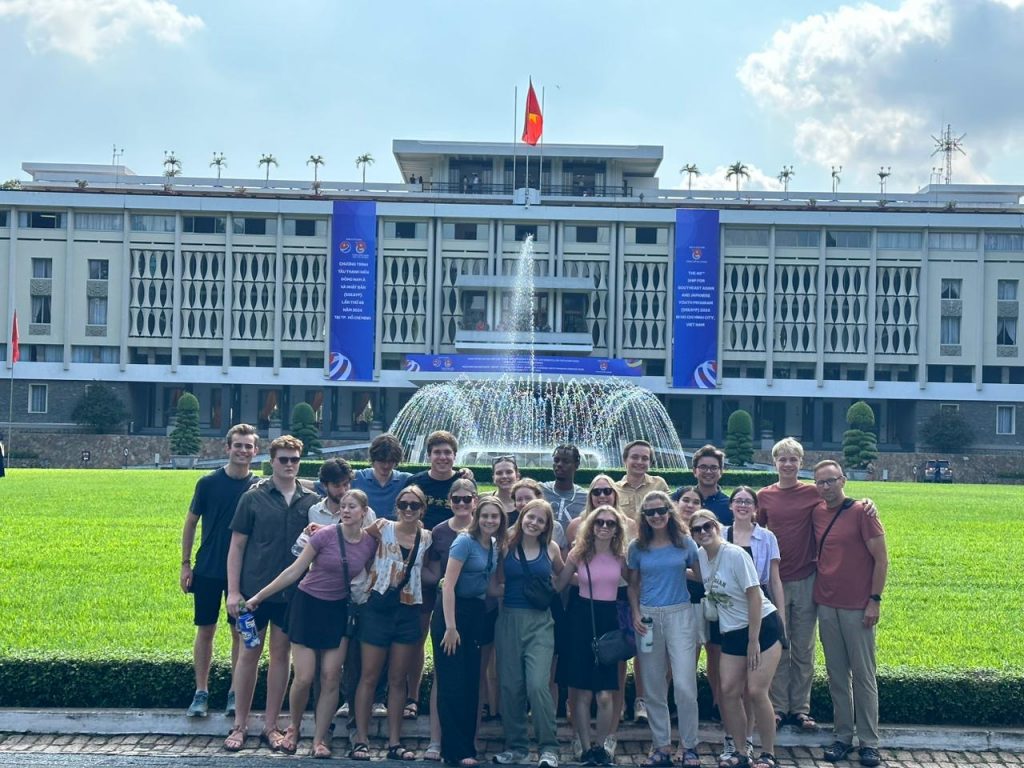
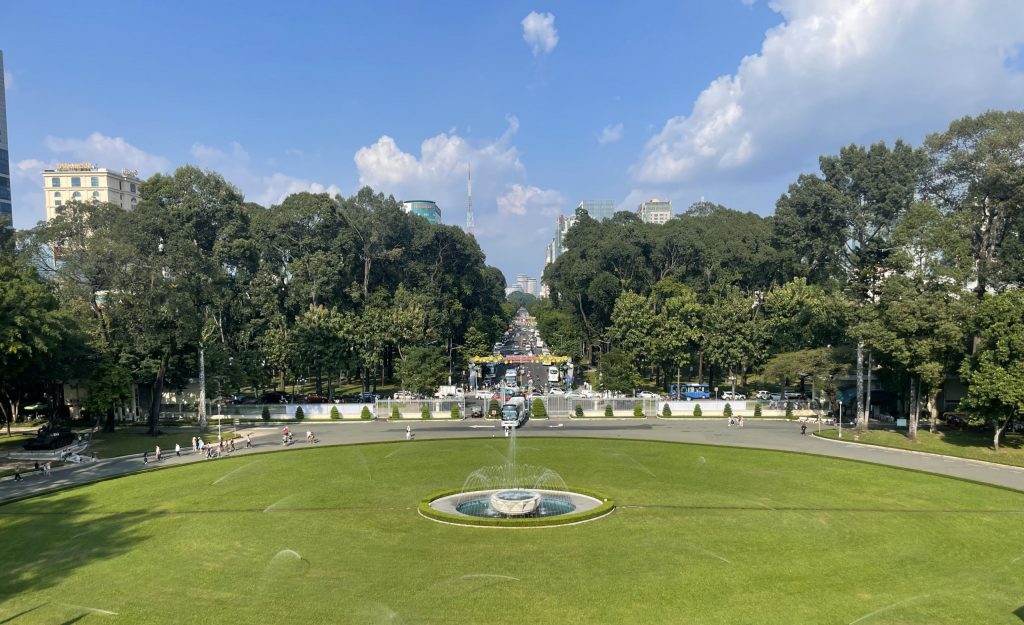
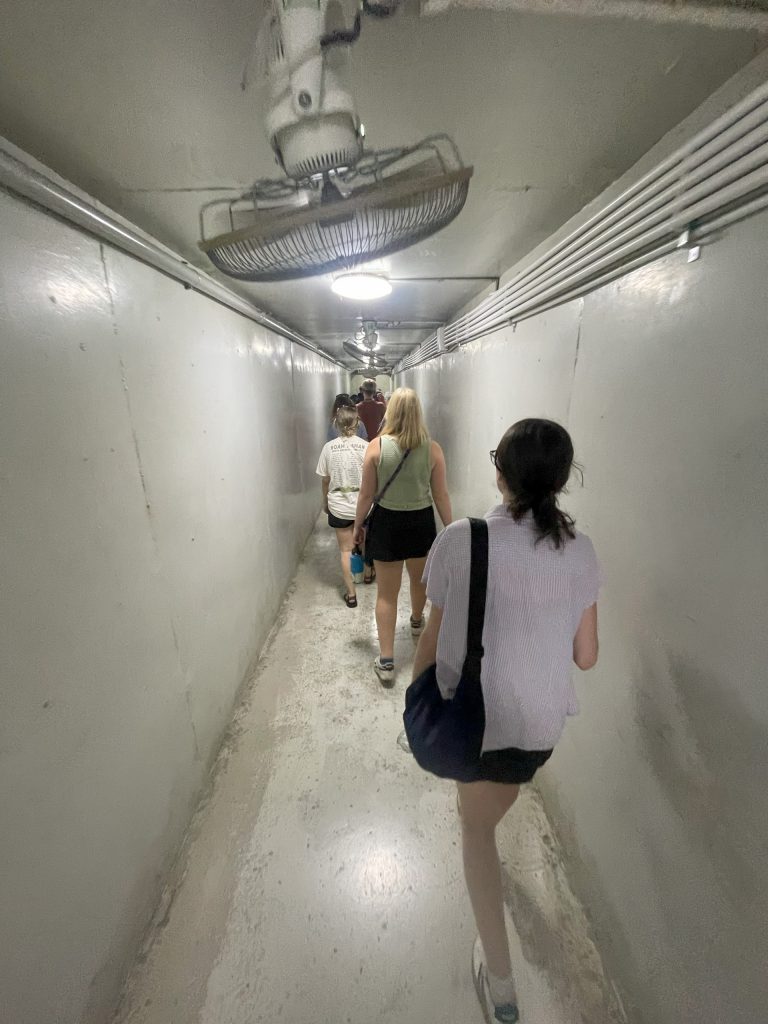

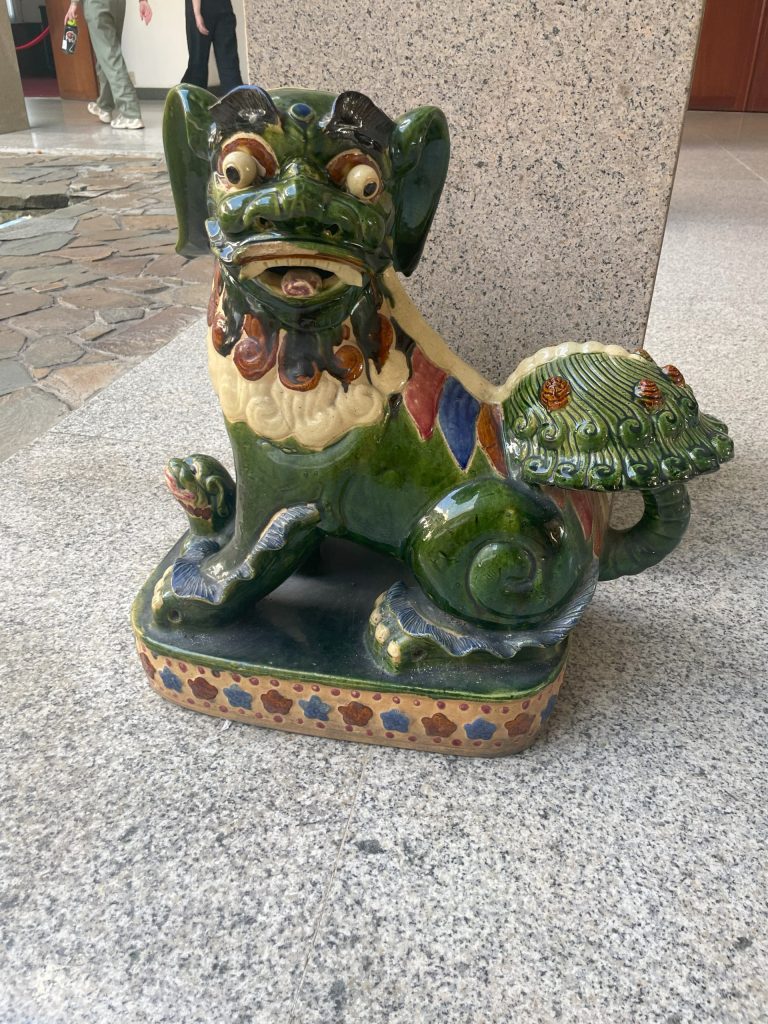
Leave a Reply